Complete Solutions to Single correct of chapter KINETIC THEORY OF GASES of Class 11 book with complete answers and questions
| Class 11 | PHYSICS |
| Chapter | KINETIC THEORY OF GASES |
| CENGAGE PHYSICS DPP | Single correct |
| Number Of Questions | 18 |
| Academic Year | 2023-24 |
The pressure P, Volume V and temperature T of a gas in the jar A and the other gas in the jar B at pressure `2P`, volume `V//4` and temperature `2 T`, then the ratio of the number of molecules in the jar A and B will be
03:19View SolutionAt what temperature is the root mean square velocity of gaseous hydrogen molecules is equal to that of oxygen molecules at `47^(@)C`
02:24View SolutionGas at a pressure `P_(0)` in contained as a vessel. If the masses of all the molecules are halved and their speeds are doubles. The resulting pressure P will be equal to
02:14View SolutionThe root mean square speed of the molecules of a diatomic gas is v. When the temperature is doubled, the molecules dissociates into two atoms. The new root mean square speed of the atom is
01:53View SolutionThe molecules of a given mass of a gas have rms velocity of `200 m//s at 27^(@)C and 1.0 xx 10^(5) N//m_(2)` pressure. When the temperature and pressure of the gas are respectively `127^(@)C and 0.05 xx 10^(5) Nm^(-2)`, the rms velocity of its molecules in `ms^(-1)` is
02:16View SolutionWhich of the following statement is true?
02:57View SolutionAt which of the following temperatures would the molecules of a gas have twice the average kinetic energy they have at `20^(@)C`?
01:51View SolutionA vessel contains a mixture of one mole of oxygen and two moles of nitrogen at 300K. The ratio of the average rorational kinetic energy per `O_2` molecules to that per `N_2` molecules is
02:28View SolutionThree closed vessels `A, B` and `C` are at the same temperature `T` and contain gases which obey the Maxwellian distribution of velocities. Vessel `A` contains only `O_(2), B` only `N_(2)` and `C` a mixture of equal quantities of `O_(2)` and `N_(2)`. If the average speed of the `O_(2)` molecules in vessel `A` is `V_(1)`, that of the `N_(2)` molecules in vessel `B` is `V_(2)`, the average speed of the `O_(2)` molecules in vessel `C` is (where `M` is the mass of an oxygen molecule)
02:40View SolutionSuppose ideal gas equation follows `VP^(3) = contant`. Initial temperature and volume of the gas are T and V respectively. If gas expand to `27V` temperature will become
03:49View SolutionTwo spherical vessels of equal volume are connected by a narrow tube. The apparatus contains an ideal gas at one atmosphere and `300 K`. Now if one vessel is immersed in a bath of constant temperature `600 K` and the other in a bath of constant temperature `300 K`. then the common pressure will be
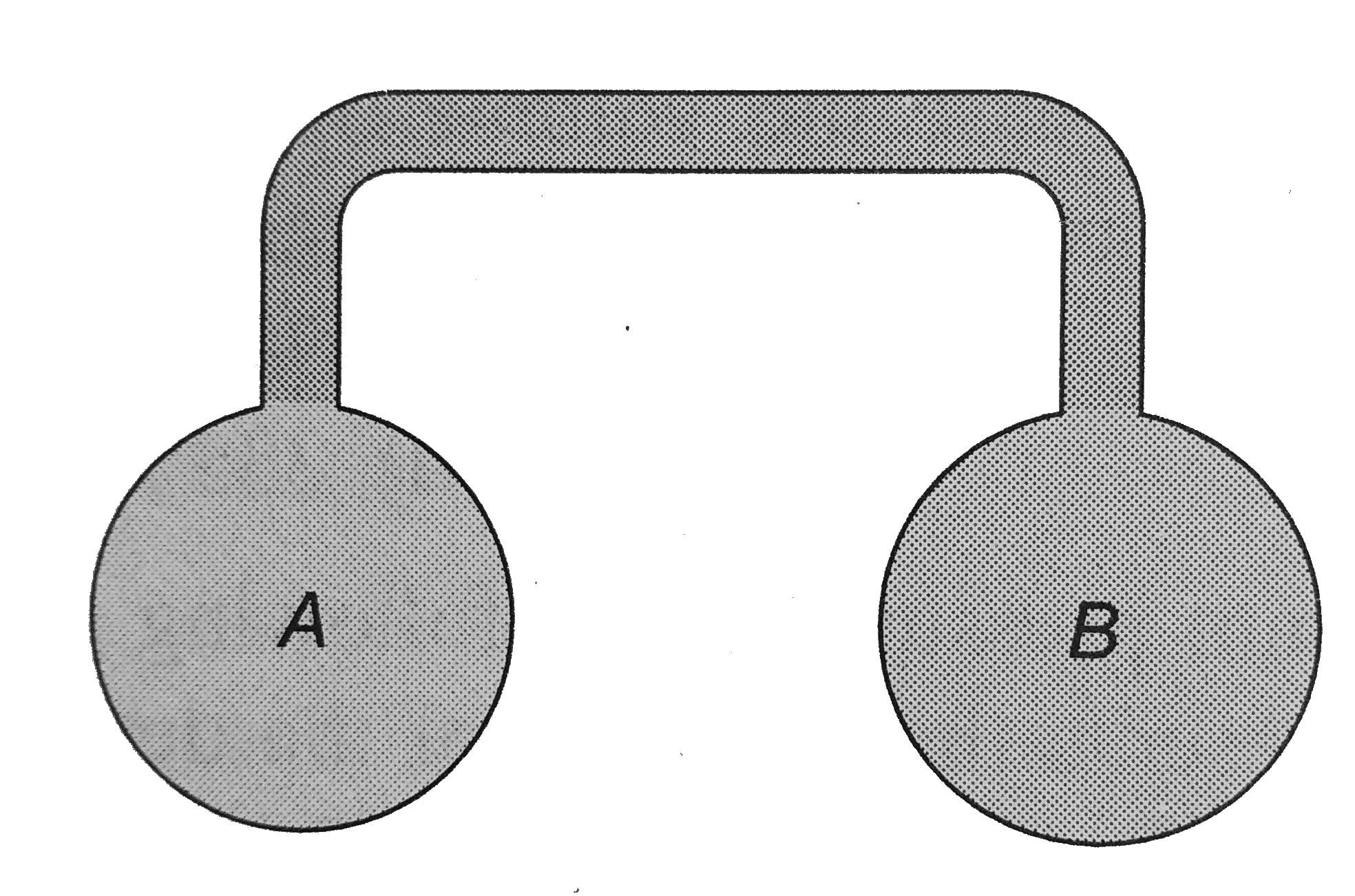 04:31View Solution
04:31View SolutionPressure versus temperature graphs of an ideal gas are as shown in figure. Choose the wrong statement
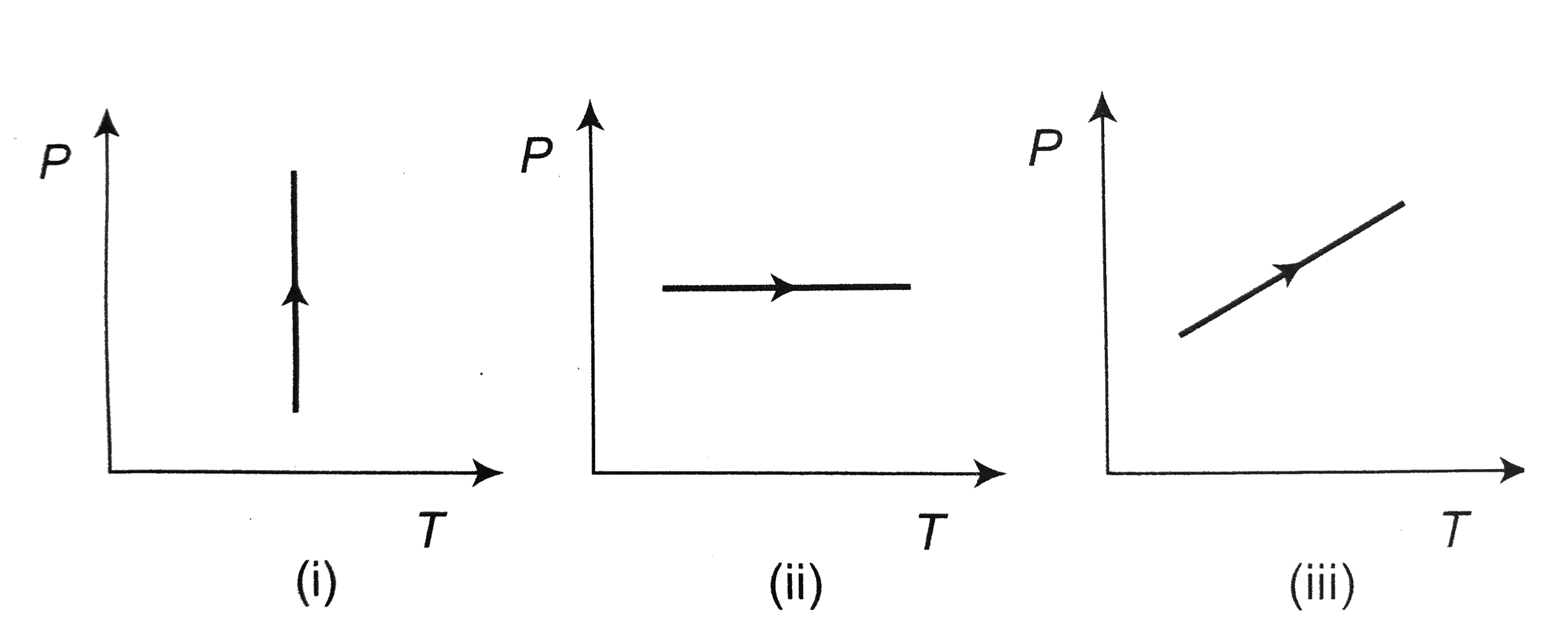 04:07View Solution
04:07View SolutionDensity vs volume graph is shown in the figure . Find corresponding pressure vs temperature graph :
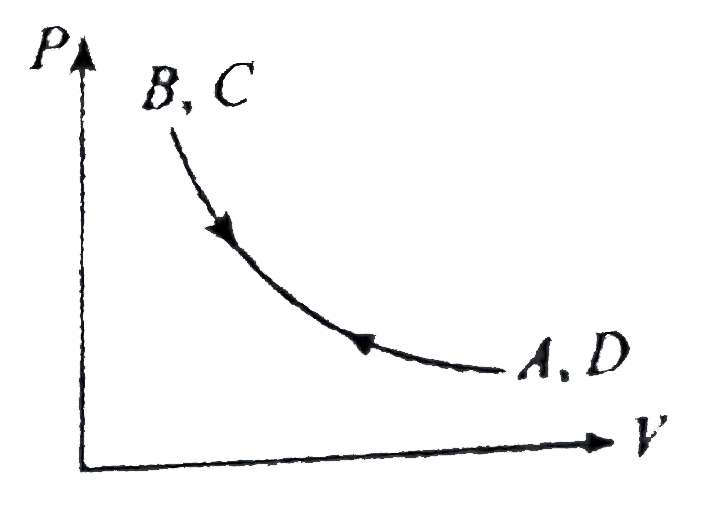 02:54View Solution
02:54View SolutionThe initial temperature of a gas is `100^(@)C` . The gas is contained in a closed vessel . If the pressure of the gas is increased by `5%` , calculate the increase in temperature of the gas :
02:45View SolutionA closed hollow insulated cylinder is filled with gas at `0^(@)C` and also contains an insulated piston of negligible weight and negligible thickness at the middle point. The gas on one side of the piston is heated to `100^(@)C`. If the piston moves `5 cm` the length of the hollow cylinder is
05:38View SolutionThe air tight and smooth pistons of a cylindrical vessel are connected with a string as shown. Initially pressure and temperature of the gas are `P_(0)` and `T_(0)`. The atmospheric pressure is also `P_(0)`. At a later time, tension in the string is `(3)/(8) P_(0)A` where `A` is the cross-sectional area of the cylinder. At this time, the temperature of the gas has become
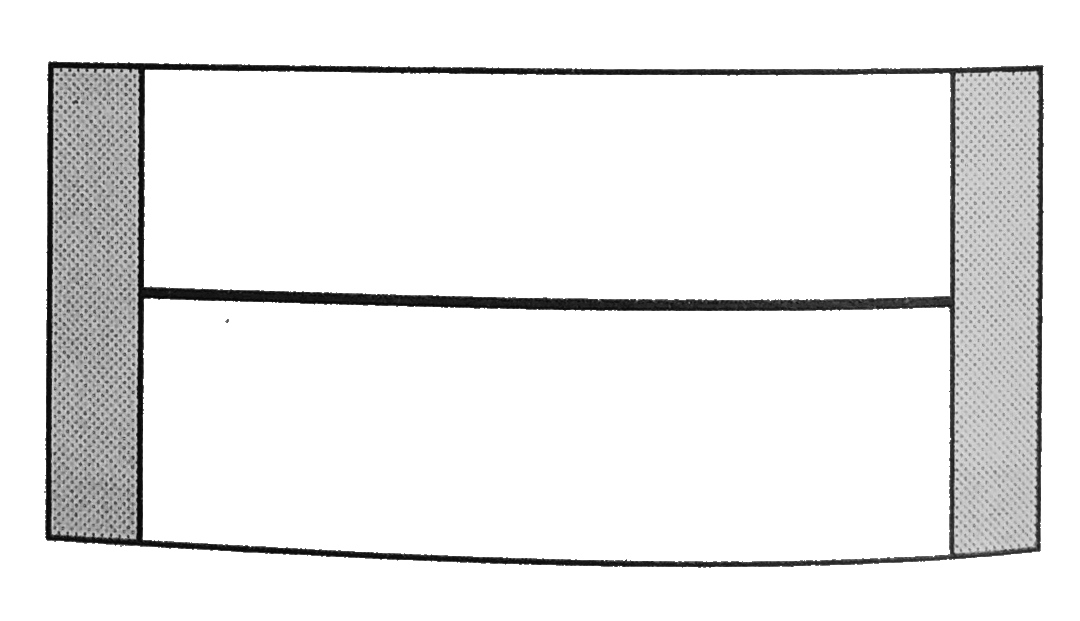 03:43View Solution
03:43View SolutionP-T graph for same number of moles of two ideal gases are shown . Find the path along which volume decreases .
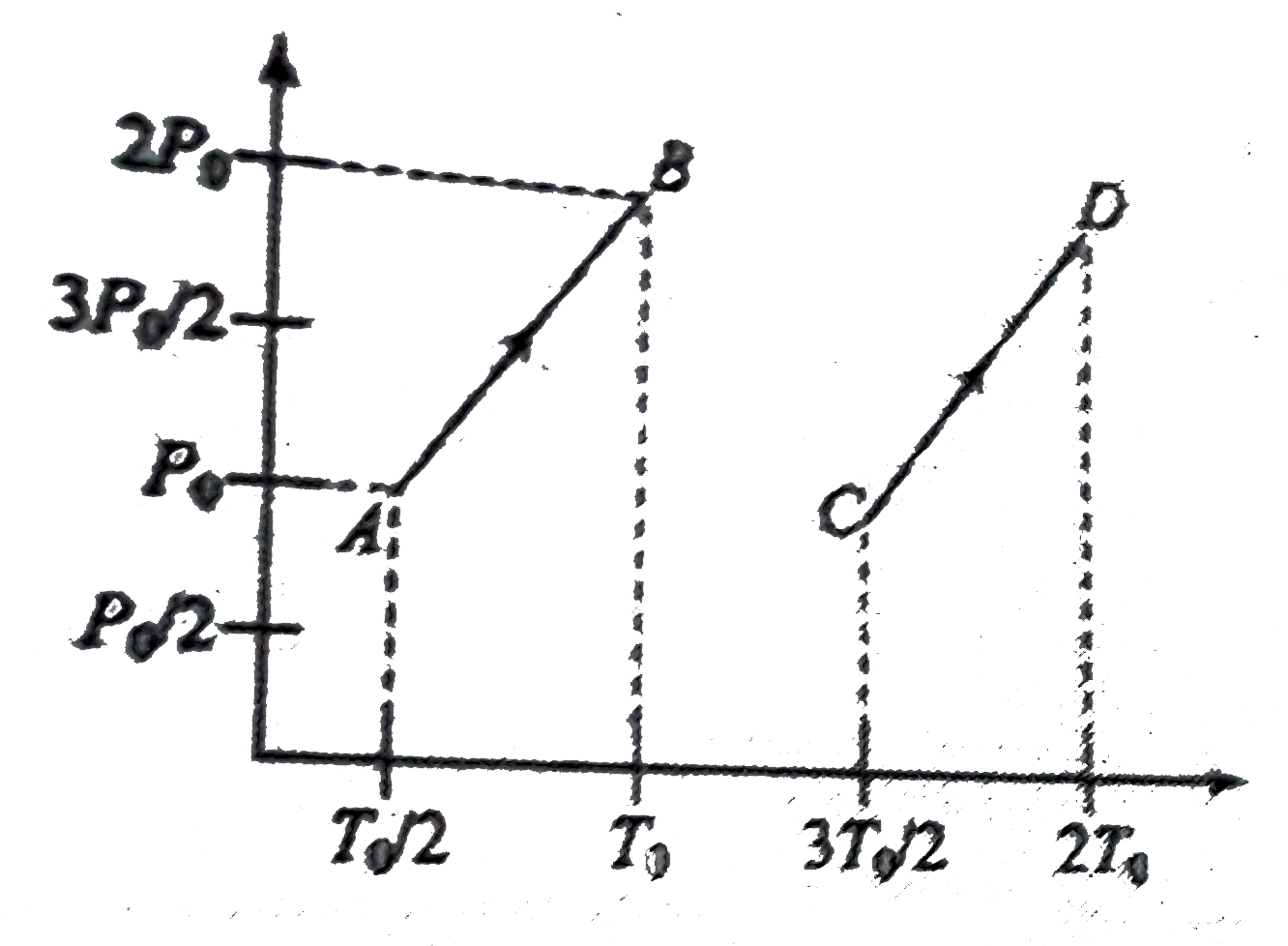 04:48View Solution
04:48View SolutionA vessel of volume `V = 30` litre is separated into three equal parts by stationary semi permeable membrane . The left , middle and right parts are filled with `m_(H) = 30` gm of hydrogen , `m_(O_(2)) = 160` gm of oxygen and `m_(N) = 70` gm of nitrogen respectively . The left partition lets through only hydrogen while the right partition lets through hydrogen and nitrogen . If the temperature in all is 300K , the ratio of pressure in the three compartments will be :
05:50View Solution
Single correct questions and complete solutions for chapter KINETIC THEORY OF GASES of CENGAGE PHYSICS (HINGLISH) of Class 11
